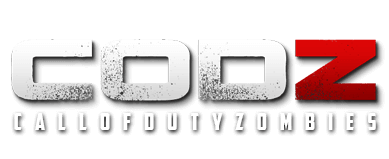Pictures & Posters
Sedan!
I believe that the Sedan poster gives us a clue to the fictional location of Nuketown.
Sedan Crater is the result of the Sedan nuclear test and is located within the Nevada Test Site, just 12 miles (19 km) southwest of Groom Lake, Nevada (Area 51). The crater was listed on the National Register of Historic Places on March 21, 1994. The crater is a man-made object that can be seen from earth orbit with the unaided eye.
The crater is the result of the displacement of 12,000,000 short tons (1.4×1010 cu yd) earth. Over 10,000 visitors per year visit the crater through free monthly tours offered by the U.S. Department of Energy, National Nuclear Security Administration Nevada Site Office.
Storax Sedan was a shallow underground nuclear test conducted in Area 10 of Yucca Flat at the Nevada National Security Site on 6 July 1962 as part of Operation Plowshare, a program to investigate the use of nuclear weapons for mining, cratering, and other civilian purposes. The radioactive fallout from the test contaminated more US residents than any other nuclear test. The Sedan Crater is the largest man-made crater in the United States, and is listed on the National Register of Historic Places.
=================================
Ride the Bus
=================================
The Richland Junior Chamber of Commerce produced a brochure to accompany the “Atomic Frontier Days” that were held during the first week in September of 1948.
The cover of the brochure is illustrated with a crude silhouette-style drawing in red and black—the skyline of a booming town with smoke rising from smokestacks, a great flair of white-out at the center, the whole works crowned with an atom, its neutrons zipping in orbit around the dot of the nucleus. The white nothingness that represented nuclear power is firing straight lines of white in all directions and hangs over rolling hills where a chuck wagon and three men on horseback are making their way across an empty desert spotted with sagebrush.
Atomic Frontier Days is also a book written by John M. Findlay & Bruce Hevly
On the banks of the Pacific Northwest's greatest river lies the Hanford nuclear reservation, an industrial site that appears to be at odds with the surrounding vineyards and desert. The 586-square mile compound on the Columbia in eastern Washington is known both for its origins as part of the Manhattan Project, which made the first atomic bombs, and for the monumental effort now under way to clean up forty-five years' of waste from manufacturing plutonium for the U.S. nuclear weapons complex.
Atomic Frontier Days looks through a wider lens, telling a complex story of production, community-building, politics, and environmental sensibilities. In brilliantly structured parallel stories, the authors bridge the divisions that accompany Hanford's headlines and offer perspective on today's controversies. Influenced as much by regional culture, economics, and politics as by war, diplomacy, and environmentalism, the story of Hanford and the Tri-Cities of Richland, Pasco, and Kennewick illuminates the history of the modern American West.
=================================
Power!
An obvious hint at powering the Tower/Obelisk/Spire
United States Civil Defense logo
The triangle emphasised the 3-step Civil Defence philosophy
=================================
The Tower of Babel forms the focus of a story told in the Book of Genesis of the Bible. According to the story, a united humanity of the generations following the Great Flood, speaking a single language and migrating from the east, came to the land of Shinar, where they resolved to build a city with a tower "whose top may reach unto heaven; and let us make us a name, lest we be scattered abroad upon the face of the whole earth."
God came down to see what they did and said: "They are one people and have one language, and nothing will be withheld from them which they purpose to do." "Come, let us go down and confound their speech." And so God scattered them upon the face of the Earth, and confused their languages, so that they would not be able to return to each other, and they left off building the city, which was called Babel "because God there confounded the language of all the Earth".
Pieter Brueghel the Younger (1564 or 1565 – 10 October 1636) was a Flemish painter, known for numerous copies after his father Pieter Brueghel the Elder's paintings and nicknamed "Hell Brueghel" for his fantastic treatments of fire and grotesque imagery.
Original Painting by Pieter Brueghel the Younger
=================================
Garden of Earthly Delights
The Garden of Earthly Delights is the modern title given to a triptych painted by Hieronymus Bosch
The complete works of Hieronymus Bosch
=================================
Tondal’s Vision
Detail of “The Burning Gateway”
Tondal’s Vision by Hieronymus Bosch
Les Visions du chevalier Tondal is an illuminated manuscript from 1475, now at the Getty Museum, of a French version of the "Visio Tnugdali", of which it is the only fully illuminated manuscript to survive.
The Visions of the Knight Tondal or "Visio Tnugdali", was written in Latin in the 12th century by an Irish monk named Marcus in Regensburg, where there was an Irish monastery. It was "the most popular and elaborate text in the medieval genre of visionary infernal literature" and had been translated forty-three times into fifteen languages by the 15th century, including Icelandic and Belorussian. It may have been part of the inspiration for Dante's journey into hell, purgatory and heaven.
In the story, Tondal is a wealthy Irish knight who passes out at a feast and goes into a deep dream-journey through Hell, Heaven and Purgatory (never so named – the doctrine was still in development), guided by an angel. The experience turns Tondal into a pious man. The story is set in Cork, Ireland in 1148, and claims to be a translation of an original in the Irish language, which however has not survived.
















